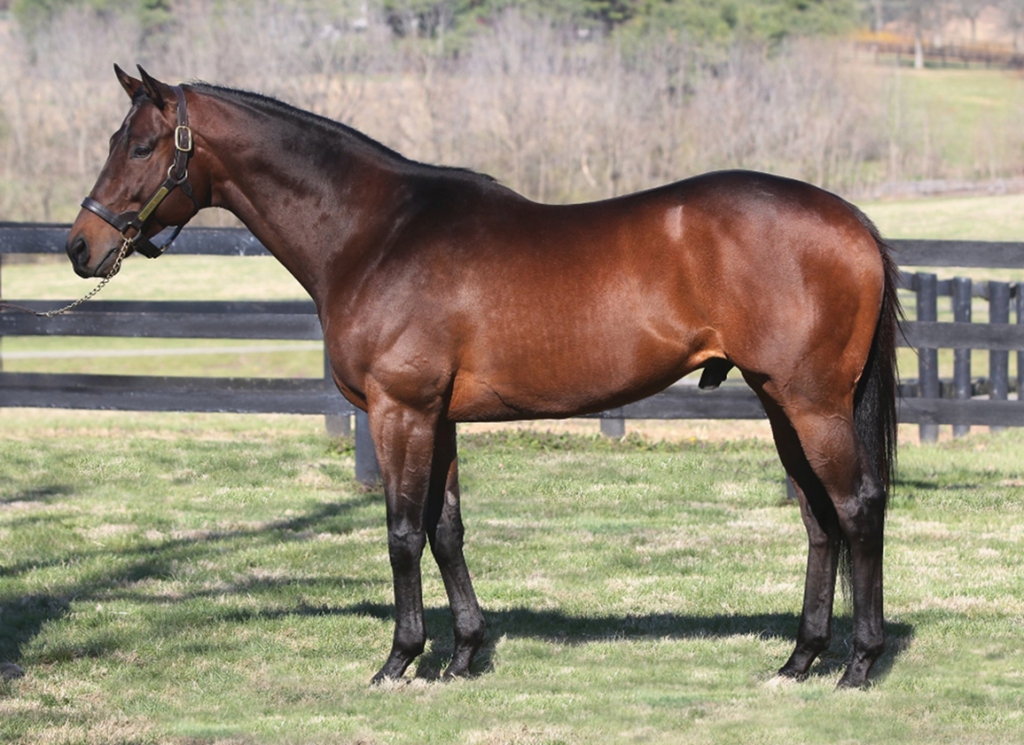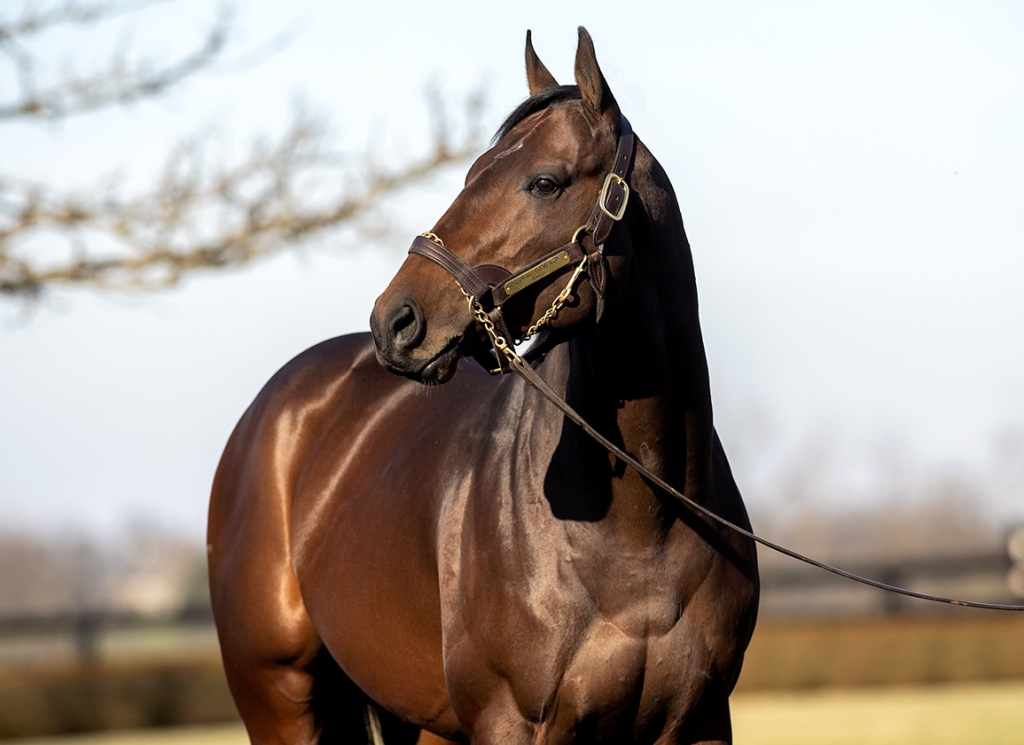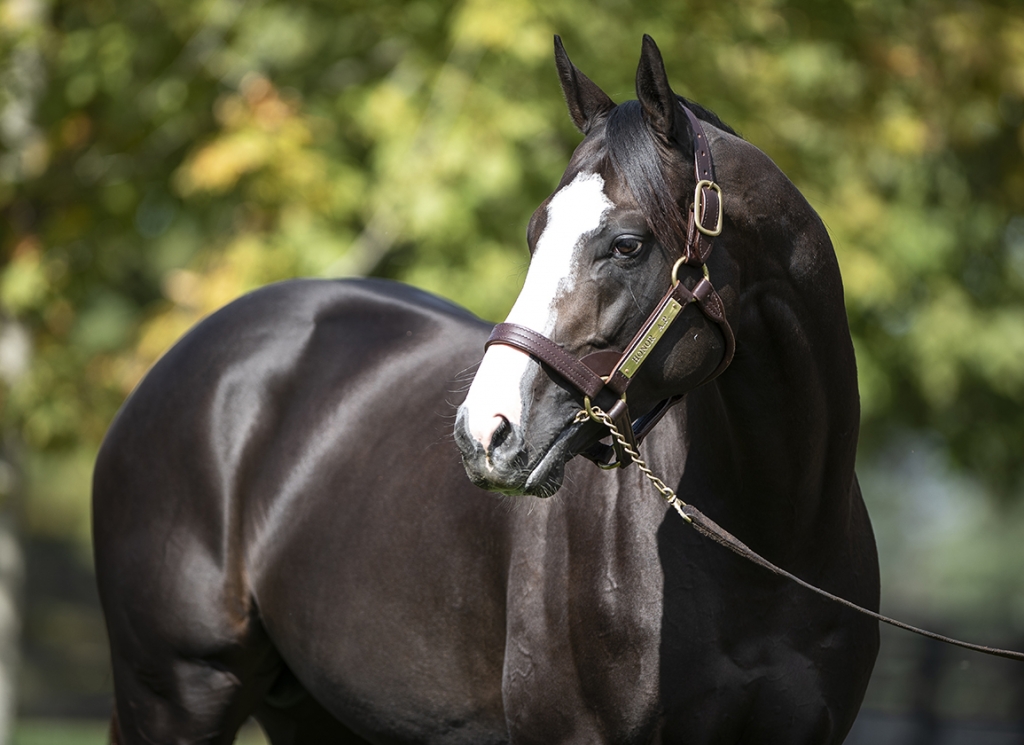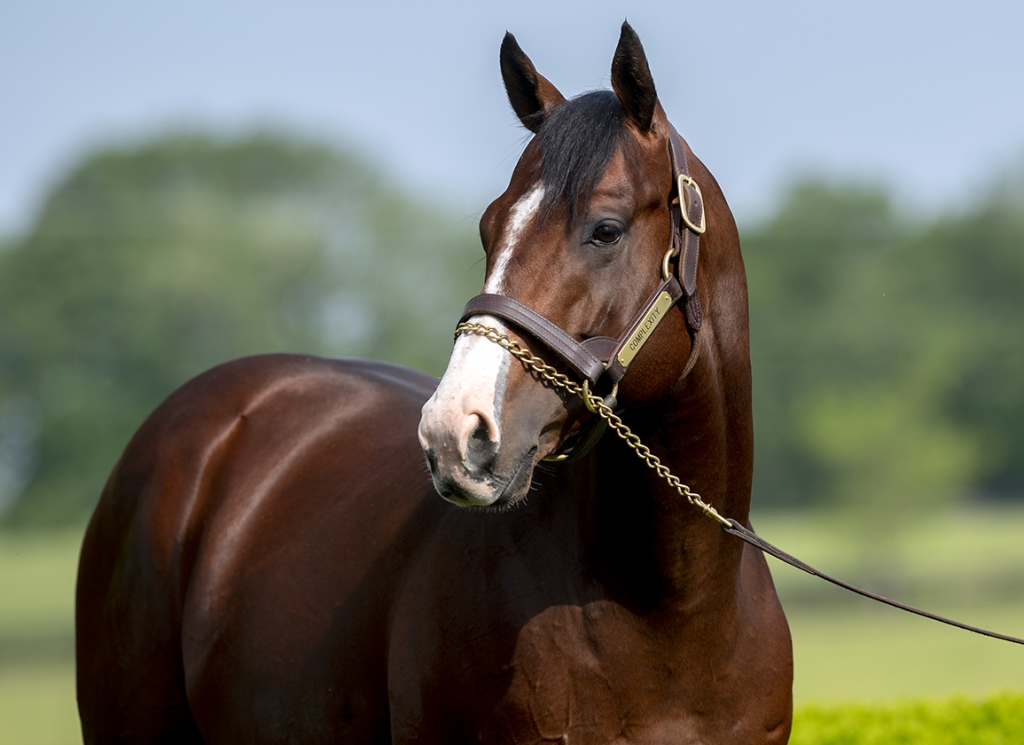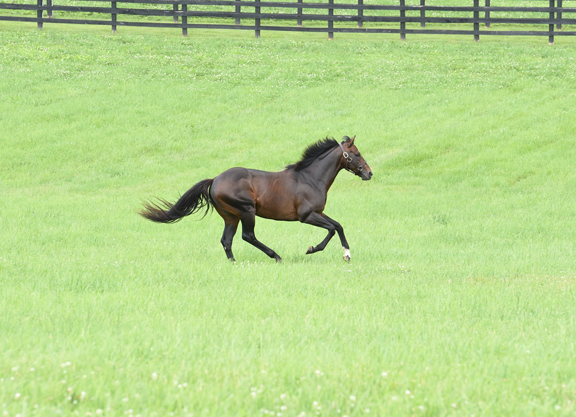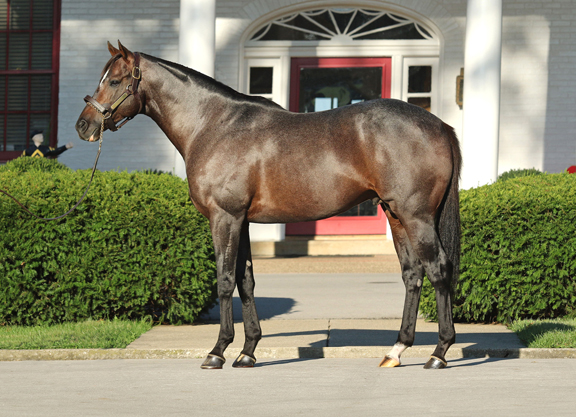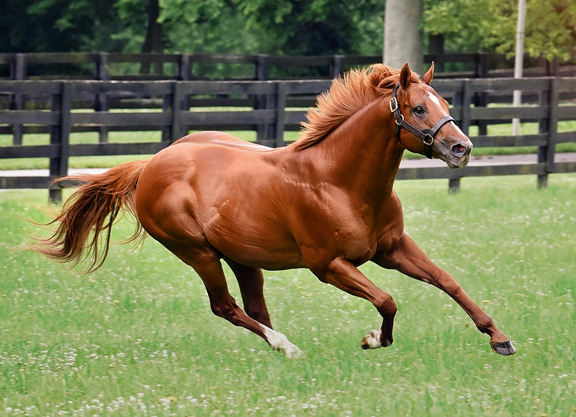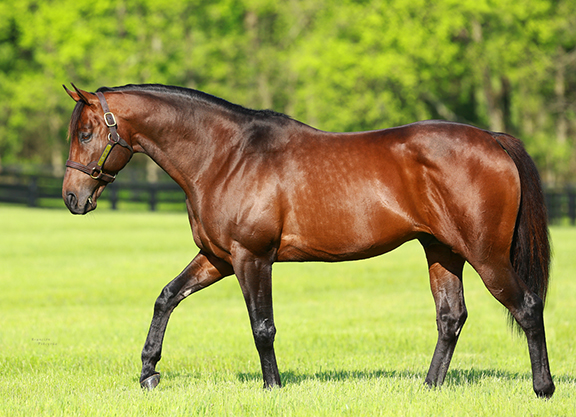In reaching the penultimate instalment of our series, once again we are obliged by the steepening commercial gradient to combine different intakes–this time, those who have now launched between four and six juvenile crops–to ensure a suitably competitive podium. For by this stage of their career the majority of Kentucky start-ups will already have packed their bags for regional or overseas programs. One or two are still barely clinging on, their books plummeting, but overall we're now looking at those few who have bravely consolidated to the brink of inclusion among those we'll be featuring in the final leg of our series, as “Established Sires”.
Because while few have quite maintained their early book sizes, they have at least now had a fair opportunity to show their hand, with between three and five sophomore crops. We can no longer complain that their stock has been judged prematurely, especially given that they will typically have been given their biggest chance in their opening books. And since most will meanwhile have had their fees trimmed, simply to stay in the game, you could argue that this stage of a stallion's career tends to produce some of the very best value in the marketplace. Indeed, among these three intakes, Maclean's Music alone stands as high as $50,000, and he does so only by dint of doubling his fee for 2022–thanks to 221 mares last spring, followed in the summer by his breakout Grade I exacta.
Bearing in mind that he actually belongs to the most exposed of these three groups, Maclean's Music shows that stallions at this point have useful potential to get you ahead of the game. In surviving the commercial trauma of their stock's racetrack exposure, they have tended to establish a loyal base on which to build again. They have “come out the other side”, so to speak.
Even so, it becomes ever more difficult to agree quite what we mean by “value”. End users will be delighted to obtain inexpensively the services of what may now be considered relatively proven sires; but commercial breeders still need some residual market momentum–resilient yearling averages, maybe, or a filling “pipeline”–if they are to keep the faith.
So here, offered as subjectively as ever, are some that may achieve a happy medium.
Bubbling under: Let's hope Paynter gets due recognition for a Horse of the Year, because he's far from a one-trick pony with 20/38 stakes winners/performers at a clip that stands right up to, say, his more expensive classmate Violence (who does, in fairness, have five Grade I horses against just Knicks Go). One way or another Paynter continues to be commercially neglected, which does mean that he offers especially rare value, on $10,000 at WinStar, for the end-user.
That's exactly what The Factor has already proven himself to be–and he's set for another top 20 finish in the general sires' list, consistently punching way above belt on $17,500 at Lane's End. He's been doing that ever since his return from Japan and, while that year away will leave him treading water briefly (no sophomores in 2022), he will be kept in business by his older stock, not least in view of their trademark, teak soundness. Foals bred now will be well placed to capitalise on renewed momentum, with books of 150 and 135 in the pipeline. The Factor may be hard to keep off the podium among established sires this time next year.
Take Charge Indy has had to regroup from a rather longer exile, having spent three years in Korea before earning an unusual repatriation through the endeavors of stock he had left behind. He requires just a little patience, with his first juveniles since his return on line only for 2023, but meanwhile gets another attractive trim to $12,500 at WinStar and, while he didn't really have an adequate footprint to freshen up his resumé a great deal this year, his overall record leaves no doubt of his competence to convert that sumptuous pedigree into stakes horses. I suspect that those who stick with him now will soon find themselves catching a rising tide.
The only member of Take Charge Indy's class to get black-type horses at a superior rate is Jimmy Creed, who just needs to improve his conversion rate: he has outstanding ratios for stakes, graded stakes and Grade I performers and is surely due a spate of headliners to follow his first elite winner, Casa Creed, one of just three scorers from as many as 17 stakes placers in 2021. Remember that Jimmy Creed, having rallied from 67 mares in 2017 to 165 in 2018, also has numbers on his side–and not least of these is a fee of $10,000 at Spendthrift.

Union Rags | Sarah Andrew
Bronze: UNION RAGS (Dixie Union–Tempo, by Gone West)
$30,000 Lane's End
Has the time come to get back on board the Union Rags express? There's no point pretending that the halving of his fee from $60,000 last spring was purely a COVID concession. He had hoisted himself from an initial $35,000 with no fewer than four Grade I winners from his first two crops, but dropped to ninth in the fourth-crop table in 2019 and slipped to 111 mares in 2020. But his farm's businesslike response was immediately rewarded by a return to full subscription (by their commendably restrained standards, anyway) at 164 mares.
In terms of output, then, Union Rags has plenty to work with, if he can regroup now. And that is exactly what he has begun to do. In 2021, he's back at the top of the class by stakes winners (seven), graded stakes winners (four) and graded stakes performers (11). He's had a number of near-misses in resonant races: Express Train was foiled by half a length in the GI Santa Anita H., Dynamic One missed by a nose in the GII Wood Memorial, and Commandperformance finished second in the GI Champagne S. and fourth in the GI Breeders' Cup Juvenile on only his second and third starts. The $1-million baby Spielberg is back on the worktab, too.
It feels like the stock of Union Rags taper to a peak that is higher than it is wide. Cumulatively, his percentage of black-type action doesn't quite match classmate Creative Cause, for instance, and he stands at a quarter of the fee. But when Union Rags does connect, he can hit a long way. He has so far assembled as many as 12 Grade I performers among 29 placed at graded stakes level overall, at a ratio that measures right up to his universally admired studmate Twirling Candy.
Union Rags always promised to cover all bases as a fast juvenile (won GII Saratoga Special by seven lengths en route to GI Champagne S. success and a head defeat at the Breeders' Cup) who stretched his speed to win the GI Belmont S. on what sadly proved his final start. Though somewhat shaken by his ups and downs, the market maintains him with ample viability at this kind of fee (last two yearling crops averaged $87,024 and $106,000) and Union Rags, who has now been joined at stud by his imposing son Catalina Cruiser, is certainly a conduit of some venerable genes. His half-sister is the dam of an international force in Declaration of War (War Front) while his third dam is a British Classic winner by a son of Hyperion.
It goes without saying that a lot of the new sires corralling huge books this coming spring will never manage a single Grade I winner, never mind four, and it seems a little unfair to punish Union Rags for doing so well, so quickly, and then not repeating quickly enough. It takes a potent sire to do what he did, and he's the self-same package now–but at half the fee he could charge only a couple of years ago. Definite scope for Rags to riches, once again.

Cairo Prince | Sarah Andrew
Silver: CAIRO PRINCE (Pioneerof the Nile–Holy Bubbette, by Holy Bull)
$15,000 Airdrie
There's been an uncanny parity between the standout fourth-crop sires Goldencents (Into Mischief) and Cairo Prince, who from virtually the same number of named foals (454 and 450 respectively) have so far been precisely in step for black-type performers (38 apiece) and graded stakes winners (five each), their fees similarly settling at $15,000.
But while Goldencents was first to a Grade I breakout, it's the Airdrie stallion who has opened up daylight when measured by stakes winners (18 plays 13) and graded stakes horses (13 against eight)–and, critically, he is due for fresh impetus.
Because now is the time Cairo Prince can start to register the upgrade in his mares following his sensational sales debut in 2017, when his first yearlings averaged 15 times conception fee. In 2018, he received the rare accolade of a second fee increase before he had even had a runner, to $25,000 from an opening $10,000.
The first foals resulting from that heightened demand are this year's juveniles and we can already see the dividends. True, some of the most accomplished of his youngsters were bred at Airdrie, such as stakes winner/GI Starlet S. runner-up Cairo Memories; and recent runaway Churchill debut winner Park On the Nile. But already Cairo Prince has sired 29 winners from 57 starters in this crop, including seven black-type performers, putting him behind only Into Mischief himself in the juvenile standings. And the champion stallion has needed 86 starters for his 33 winners!
Something is stirring with Cairo Prince, then–already anticipated at the 2-year-old sales, where his average basically doubled on the previous crop. And his stock should continue to thrive, too: Cairo Prince was all set to build on his early foundations (won GII Nashua S. on second start, romped in GII Holy Bull S.) when derailing in the GI Florida Derby. His dam was a stakes winner at four, after all, and his family has just the kind of copper-bottomed seeding we know to expect at this farm: third and fourth dams, indeed, are by Nearctic and Native Dancer. Closer up, Cairo Prince is a half-brother to the Grade I-placed dam of Grade I winner and promising WinStar sire Outwork (Uncle Mo).
It's pretty rare for the market to “find” a new stallion the way it did this one, being generally inclined slavishly to obey the values implied by covering costs. Yet Cairo Prince, partly as a result of last year's COVID cuts, has come back down in fee even if his “pipeline” has become ever more loaded. As a result, those who breed to him now have a low-stakes opportunity to cash in as this second, better-bred cycle starts to do its stuff. With his lamented sire a premature loss, the Prince looks ready to accede to the throne.

Dialed In winning the 2011 Florida Derby | Coglianese
Gold: DIALED IN (Mineshaft–Miss Doolittle, by Storm Cat)
$15,000 Darby Dan
Now here's a horse whose every step takes him forward, with only his fee standing still. No surprise, certainly, that his second Grade I winner should also be a graduate of his 2017 book, which soared giddily to 231 mares from 105 the previous year.
That surge came after he had topped the freshmen prizemoney table; also top by wins and second (missed by one) by individual winners, despite fielding only 40 starters against 53, 57 and 56 for the next three in the table–and all from an opening fee of just $7,500.
Dialed In's next four books have brought in another 542 mares but his fee, having meanwhile touched $25,000, has been allowed to drift down again. We know that the market always needs encouragement, pending the maturing of a new cycle in a stallion's career; and of course he also participated in the COVID concessions made last year. But the upswing could already be read at the yearling sales this year, where Dialed In catapulted his average from $41,462 in 2020 to $71,000, processing no fewer than 36 of 39 into the ring. That's a really significant vote of confidence in a stallion at this stage of his career.
Those of us who have long nursed high hopes for Dialed In could salute Get Her Number's juvenile Grade I success last year as a sign of things to come and, sure enough, his sophomores in 2021 included not just GI Arkansas Derby winner Super Stock but also Mr. Wireless, who paired the GIII Indiana Derby and GIII West Virginia Derby. Moreover their sire, for all the precocity he injected into his freshmen's title, has also established his ability to maintain the output of his maturing stock: his first headliner Gunnevera, for instance, was still going strong at five.
I do admire the way Dialed In has pulled himself up by his bootstraps. He had been something of a forgotten horse when starting out at a basement fee, having failed to reward perseverance on the track (single disappointing start at four) after dropping out the previous summer for removal of a chip. He had earned favoritism for the first Saturday in May in winning the GI Florida Derby, only to get stuck out the back before finishing strongly; before then doing the same in the GI Preakness.
But he has always had terrific physical charisma–as a $475,000 Saratoga yearling, he was the most expensive of the crop for his stalwart sire–and there's no doubt that this is a true aristocrat. His pedigree has a beautiful shape, with an Eclipse champion as second dam, and he has raised up some pretty humble mares. Get Her Number's dam, for example, had changed hands for $1,300, while Chalon, beaten a head for the GI Breeders' Cup Filly and Mare Sprint and a few cents off millionaire status, is out of a $20,000 mare. The dam of Gunnevera, himself a $16,000 yearling who banked over $5.5 million, had been sold for $13,000.
Dialed In already has 22 graded stakes performers, at a pretty respectable ratio, but only now is he starting to reap the rewards he earned in seizing his first opportunities so eagerly. If you want to use a literal speed-Dial, there's now a full signal.
The post Value Sires for ’22, Part VII: Through the Crossroads appeared first on TDN | Thoroughbred Daily News | Horse Racing News, Results and Video | Thoroughbred Breeding and Auctions.
